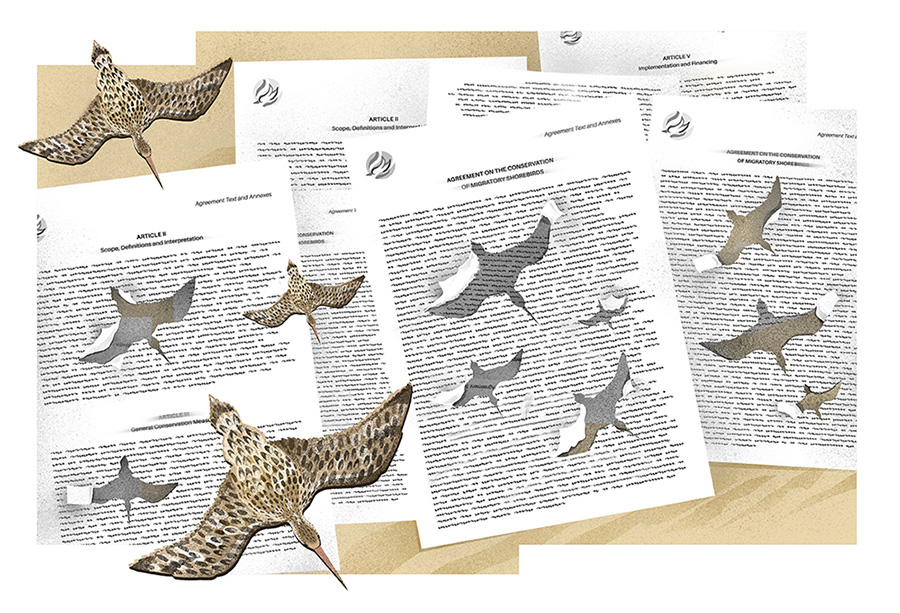Wildlife populations are threatened by human-caused mortalities, ranging from hunting, roadkill, collisions with wind turbines to bycatch (the accidental capture of non-target species) in fisheries. Examples like the extinct passenger pigeon (Ectopistes migratorius) or the northern white rhino (Ceratotherium simum cottoni), of which only two individuals remain, show us how quickly the loss of individuals due to human activity can lead to the extinction of local populations and even entire species. Fisheries bycatch, in particular, remains a global problem for biodiversity conservation and fisheries management. Indeed, the extinction of the enigmatic Yangtze River dolphin (Lipotes vexillifer) in China was attributed in large part to fisheries bycatch. Likewise, the vaquita (Phocoena sinus) of Mexico’s Sea of Cortez faces imminent extinction for the same reason. With no more than a dozen individuals remaining, it is now the smallest porpoise in both size and number. As such, one of the pressing challenges for wildlife managers and policymakers is: How many deaths are too many? At what point would a wildlife population decline or even go extinct?

Determining a sustainable limit to human-caused mortalities is a paramount conservation challenge and requires appropriate tools. The Potential Biological Removal (PBR) equation, for example, is a popular tool in fisheries management, allowing scientists and fisheries managers to calculate the maximum allowable number that can be removed from a ‘stock’ (wildlife population). In other words, it is an estimation of an acceptable limit of wildlife mortality due to human activity (e.g. bycatch in the case of fisheries). PBR is based on estimates of the impacted population’s size and growth rate. However, such conventional tools typically do not consider ‘stochastic’ factors—random chance events that affect wildlife populations. Stochastic factors that influence population dynamics include environmental changes, such as extreme weather events, which are expected to increase in frequency and intensity with climate change. Although often ignored in population models for conservation, stochastic factors can have large effects on the fate of populations because they affect birth and death rates, and in some cases may be the tipping point of whether a population remains stable or declines, whether it persists or goes extinct.

With our colleagues, we developed a new conservation tool that incorporates such stochastic factors to determine sustainable limits to wildlife mortality due to human activity. We called this tool ‘SAMSE’ for “Sustainable Anthropogenic Mortality in Stochastic Environments”. Likewise, we called the sustainable limit to wildlife mortality the ‘SAMSE-limit’, which we defined as the maximum number of individuals that can be taken from a population without causing a population decline in a changing environment. SAMSE is based on population modelling that can be implemented using off-the-shelf software, such as VORTEX, offered by the IUCN Species Conservation Toolkit Initiative free of charge.
We applied SAMSE to a case study of bottlenose dolphins (Tursiops truncatus) subject to fisheries bycatch off Western Australia. The Pilbara Fish Trawl Interim Managed Fishery targets a range of finfish for the domestic market, but unfortunately, also results in the accidental capture of protected species, including dolphins. Captains reported 16–34 dolphins caught per year (2006–2017), while independent fishery-observers estimated dolphin bycatch rates of 45–60 dolphins per year (2003–2009). When we applied the conventional PBR method without incorporating stochastic factors, the maximum bycatch mortality limit was 16.2 dolphins per year. By contrast, when we incorporated stochastic factors, using SAMSE, we calculated a SAMSE-limit of just 2.3–8.0 dolphins per year. Reported dolphin capture rates have thus consistently exceeded the SAMSE-limit. Our case study suggests that dolphin capture rates are unsustainable, especially when incorporating stochastic events. The study also illustrates that conventional approaches that do not account for chance events may underestimate the true impact of human-caused wildlife mortality.
By introducing SAMSE as a novel conservation tool, we offer a broadly applicable, stochastic addition to the conservation toolbox for evaluating the impact of human-caused wildlife mortality. We are working on an app that will make SAMSE easily accessible to researchers and wildlife managers worldwide. This is particularly salient given the broadening spectre of climate change-induced environmental fluctuations.
Further reading:
Manlik, O., R. C. Lacy, W. B. Sherwin, H. Finn, N. R. Loneragan and S. J. Allen. 2022. A stochastic model for estimating sustainable limits to wildlife mortality in a changing world. Conservation biology 36(4): e13897. doi:10.1111/cobi.13897.






